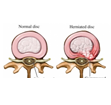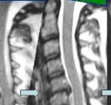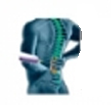Herniated Back Disc Ozone Therapy
-
Herniated Back Disc Ozone Therapy
Fix My Back DiscStudies in 1934 first drew the widespread attention in herniated disc or nucleus pulposus as one of the important cause of low back pain and leg pain. (1) Apart from conservative therapy all other forms of treatment aim at decompressing the nerve roots.
These can be done by taking the disc out by surgery or by decompressing the foramen and disc by different interventions. The various treatment options have confused clinicians due to significant failure rate associated with different kinds of surgeries as well as with different interventions. Outcome studies of lumber disc surgeries document a success rate between 49% to 95%.
(2) Reasons for this failure are:Good to very good results are achieved in over 90 % in patients with simple, acute disc herniations, in more complicated cases it is achieved 80 to 85 % of the time.
1-Dural fibrosis
2-Arachnoidal adhesions
3-Muscle & fascial fibrosis
4-Mechanical instability resulting from the partial removal of bony and ligamentous structures required for surgical exposure and decompression leading to facet & sacro-iliac joint dysfunctions
5-Radiculopathy
6-Recurrent disc herniation
There has been surge of interest in search of safer alternative method of decompressing the nerve roots maintaining the structural stability. Epidural steroid injection, transforaminal epidural procedures has a high success rate (up to 84%) but chances of recurrences are also high. (6-8) Chemonucleolysis using chymopapain has moderate success rate (approximately 66% at one year). (9,10) It has also the chances of anaphylaxis following intradiscal chymopapain injection. Injection of ozone for discogenic radiculopathy (low back pain with radiation to legs) has developed as an alternative to chemonucleolysis and disc surgery popularly called ozone therapy for slip disc. Owing to its high success rate, less invasiveness, fewer chances of recurrences and remarkably fewer side effects ozone therapy for slip disc is becoming very popular. (11-14) Muto suggested intradiscal injection of ozone for disc hernia in 1998 under CT guidance. Leonardi popularized fluoroscopy guided ozone injection into the intervertebral disc. After that, successful outcomes of ozone therapy have been reported from various European centers. It is very important to note from those reports that complications of ozone therapy are remarkably few. How does ozone therapy work? The action of ozone therapy is due to the active oxygen atom liberated from breaking down of ozone molecule. When ozone is injected into the disc the active oxygen atom called the singlet oxygen or the free radical attaches with the proteo-glycan bridges in the jelly-like material or nuceus pulposus. They are broken down and they no longer capable of holding water. As a result disc shrinks and mummified and there is decompression of nerve roots. It is almost equivalent to surgical discectomy and so the procedure is called ozone discectomy or ozonucleolysis or popularly ozone therapy for slip disc. Besides, it has an anti-inflammatory action due to inhibitions of formation of inflammation producing substances, tissue oxygenation is increased due to increased 2,3 diphosphoglycerate level in the red blood cells. All these leads to decompression of nerve roots, decreased inflammation of nerve roots, increased oxygenation to the diseased tissue for repair work. (11, 13)Ozone Nucleolysis (Ozone therapy for slip disc): Indications
Ozone therapy may be done to treat most kinds of disc related pain. Ozone Therapy can be done to treat degenerated disc without any prolapse and nerve root irritation. This category is called discogenic back pain or back pain due to internal disc disruption. Axial dull ache in the low back increasing with flexion of spine is the main clinical feature. Leg pain is either nil of minimum without any dermatomal pattern of radiation. Provocative discogram should be performed. Positive discogram (provocation of similar pain more than 7/10 at a pressure below 15 psi) proves the presence of sensitized nociceptors and ozone therapy is indicated.
2.It can be done in contained disc prolapse or disc bulge with root irritation.
3.It may be done in non-contained disc (extruded or sequestrated disc) as well.
Procedure:
The patient is taken to the operation theater lying in a prone position with a pillow under the lower abdomen. The area is prepared and draped in sterile manner. The Ozone Therapy is done usually under local anesthesia with intravenous sedation (midazolam and fentanyl). Intravenous antibiotic like ceftriaxone 1G should be given prior to procedure. The procedure should be done under C-arm guidance. Though may be done under CT guidance. C-arm first should be focused to a pure anterior-posterior view to view the diseased disc. Then C-arm is cranially/caudally to abolish any double end-plates and thereby getting widest possible view of disc space. Then C-arm is rotated obliquely away from vertebral column such that facet joint come at the center of the end plates. Now the needle entry point is just lateral to the superior pars/articular pillar exactly at the center of the disc. (fig1-2) 20 or 22 G needle is introduced into the diseased disc using tunnel vision (end on view, so that needle is seen almost as a single point.) under fluoroscopic guidance. The position of needle tip may be confirmed by complete AP & lateral view. (fig 4-6) Some small amount of radio-opaque dye (omnipaque) may be injected for discogram which is optional.(fig-7) Then some 3-10 cc of oxygen-ozone mixture (at a concentration of 29-40 microgram/ml.) is injected into the disc. Ozone at this concentration is not all harmful for the surrounded tissue. So if ozone spreads to the surrounded tissues including spinal cord, there is no harm. Ozone molecule is not stable. It has a half-life of 20 minutes only. So, within 20 minutes only half of the original ozone remains, the rest becomes oxygen. Increase in temperature decreases its half-life. For injection it is always freshly prepared on site (from an ozone generator) for immediate administration. Only Ozone resistant syringes can be used for injecting it. While needle with the syringe is taken out some amount of oxygen-ozone mixture is also injected into the para-spinal muscle and para-radicular soft tissue to reduce nerve root inflammation and increased oxygenation of the para-spinal muscles.Contraindications:
-There are few conditions when ozone therapy should not be performed. -They are active bleeding from any site -Pregnancy -G6PD deficiency -Active hyperthyroidism -Loss of control of urination & defecation -Progressive sensory & motor lossComplications:
Complications of ozone therapy are very rare. They include post-procedural muscle spasm & burning pain (these are transient) & discitis (very rare due to the bactericidal effect of ozone). Other complications are similar to discographic procedure. Ozonucleolysis or ozone discectomy (Ozone therapy for slipped disc) has a success rate of about 80%. On the other hand surgical discectomy has much higher side effects compared to remarkably few side effects of ozone discectomy. Ozone therapy is usually a outpatient procedure and general anesthesia is not usually required. Ozone therapy is gaining popularity in different countries including because it offers very few side effects. We use Ozone Therapy in combination with the Discogel Treatment to provide a full on treatment to help heal your slipped disc, herniated disc or bulging disc pain problems.References:
1-Mixter WJ, Barr JS. Rupture of the intervertebral disc with involvement of the spinal canal. N Eng J Med 1934; 211:210-215.
2-Vijay S. Kumar: Total clinical and radiological resolution of acute, massive lumber disc prolapse by ozonucleolysis. Rivista Italiana di Ossigeno-ozonoterapia 4: 2005
3-Shah RV, Everett CR, McKenzie-Brown AM, Sehgal N. Discography as a diagnostic test for spinal pain: A systematic and narrative review. Pain Physician 2005; 8:187-209.
4-Schofferman J, Reynolds J, Herzog R, Covington E, Dreyfuss P, O’Neill C. Failed back surgery: etiology and diagnostic evaluation. Spine J 2003; 3:400-403. 5. Slipman CW, Shin CH, Patel RK, Isaac Z, Huston CW, Lipetz JS, Lenrow DA, Braverman DL, Vresilovic EJ Jr. Etiologies of failed back surgery syndrome. Pain Med 2002; 3:200-214.
5-Vad VB, Bhat AL, Lutz GE, Cammisa F. Transforaminal epidural steroid injections in lumbosacral radiculopathy; A prospective randomized study. Spine
6-Riew KD, Park JB, Cho YS, Gilula L, Patel A, Lenke LG, Bridwell KH. Nerve root blocks in the treatment of lumbar radicular pain. A minimum five-year followup. J Bone Joint Surg Am 2006; 88:1722-1725.
7-Ng LC, Sell P. Outcomes of a prospective cohort study on peri-radicular infiltration for radicular pain in patients with lumbar disc herniation and spinal stenosis. Eur Spine J 2004; 13:325-329.
8-Krugluger J, Knahr K. Chemonucleolysis and automated percutaneous discectomy–a prospective randomized comparison. Int Orthop 2000; 24:167-169.
9-Revel M, Payan C, Vallee C, Laredo JD, Lassale B, Roux C, Carter H, Salomon C, Delmas E, Roucoules J. Automated percutaneous lumbar discectomy versus chemonucleolysis in the treatment of sciatica. A randomized multicenter trial. Spine 1993; 18:1-7
10-Muto M, Andreula C, Leonardi M Treatment of herniated lumbar disc by intradiscal and intraforaminal oxygen-ozone (O2-O3) injection. J Neuroradiol. 2004 Jun;31(3):183-9.
11-Lehnert T, Mundackatharappel S, Schwarz W, Bisdas S, Wetter A, Herzog C, Balzer JO, Mack MG, Vogl TJ. Nucleolysis in the herniated disk. Radiologe. 2006 May 13.
12-Buric J, Molino Lova R. Ozone chemonucleolysis in non-contained lumbar disc herniations: a pilot study with 12 months follow-up. Acta Neurochir Suppl. 2005;92:93-7.
13-Andreula CF, Simonetti L, De Santis Fet al: Minimally invasive oxygen ozone therapy for lumber disc herniation. American Journal of Neuroradiology 2003; 24: 996-1000.
14-Gautam Das, S. Ray, S. Iswarari, M. Roy, P. Ghosh; Ozone Nucleolysis for Management of Pain and Disability in Prolapsed Lumber Intervertebral Disc: A Prospective Cohort Study; Interventional Neuroradiology 15: 330-334, 2009






